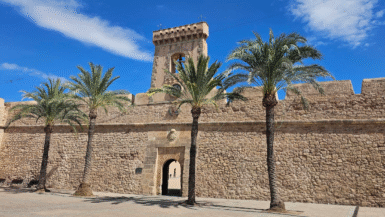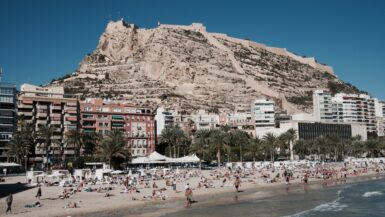Alicante is a stunning port city on Spain’s southeastern Costa Blanca. After countless visits to Alicante, this incredible city on Spain’s southeastern coast has completely stolen my heart.
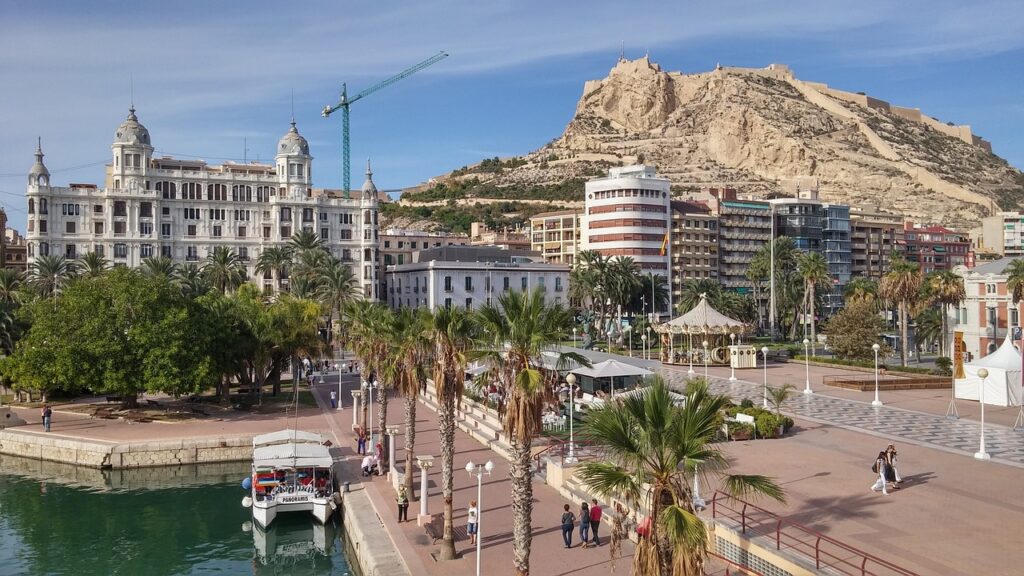
Whether you’re flying into Alicante-Elche Airport as your gateway to the Costa Blanca or making a day trip from nearby resorts like Benidorm, this guide will help you discover why locals and visitors alike fall in love with this incredible city.
Where is Alicante?
Alicante, or Alacant in Valencian, sits perfectly along Spain’s Mediterranean coast in the Valencian Community. You’ll find it roughly midway between Valencia to the north and Murcia to the south, making it an ideal base for exploring the wider region.
Alicante sits perfectly along the Mediterranean coast. It’s about 45 kilometres south of Benidorm and 64 kilometres south of Calpe.
Getting here couldn’t be easier thanks to Alicante-Elche Airport, which is just a quick 15-minute drive from the city centre. You’ll find plenty of transport options available, and if you need help getting around locally, I’ve got all the details in my Alicante taxis guide.
What to see in Alicante
If you’re looking for tours, I’ve created a separate guide on Alicante tours with plenty of free and paid options to consider!
Top attractions in Alicante
Castell de Santa Bàrbara
This imposing fortress perched 166 metres above sea level on Mount Benacantil is absolutely unmissable. As one of Spain’s largest medieval castles, the views from up here are simply breathtaking – you can see the entire city, the harbour, and miles of Mediterranean coastline stretching out before you.
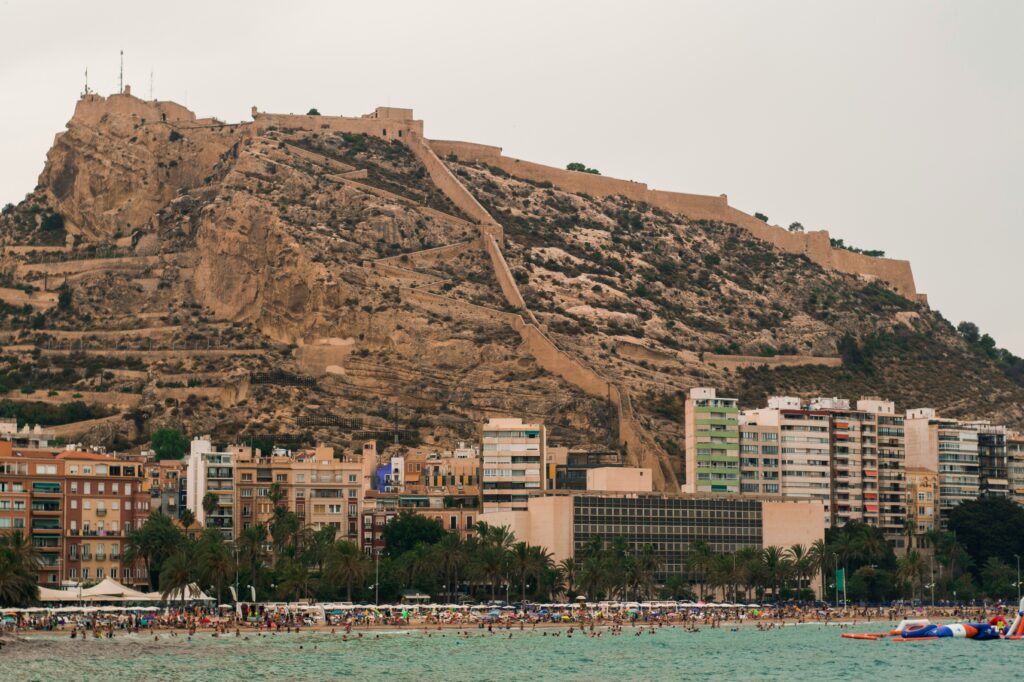
You can either hike up (which I’d recommend if you’re feeling energetic) or take the lift from El Postiguet beach for €2.70 per person. The castle is open every day, and I’ve written a detailed guide about visiting Alicante castle with all the practical information you’ll need.

Explanada de España
Running parallel to the port, this iconic promenade is paved with 6.5 million marble tiles laid in a stunning wave pattern. The Explanada de España runs parallel to the port and is one of Alicante’s most iconic spots. It’s paved with 6.5 million marble tiles laid in a wave pattern, lined with palm trees, and filled with cafés and street vendors.
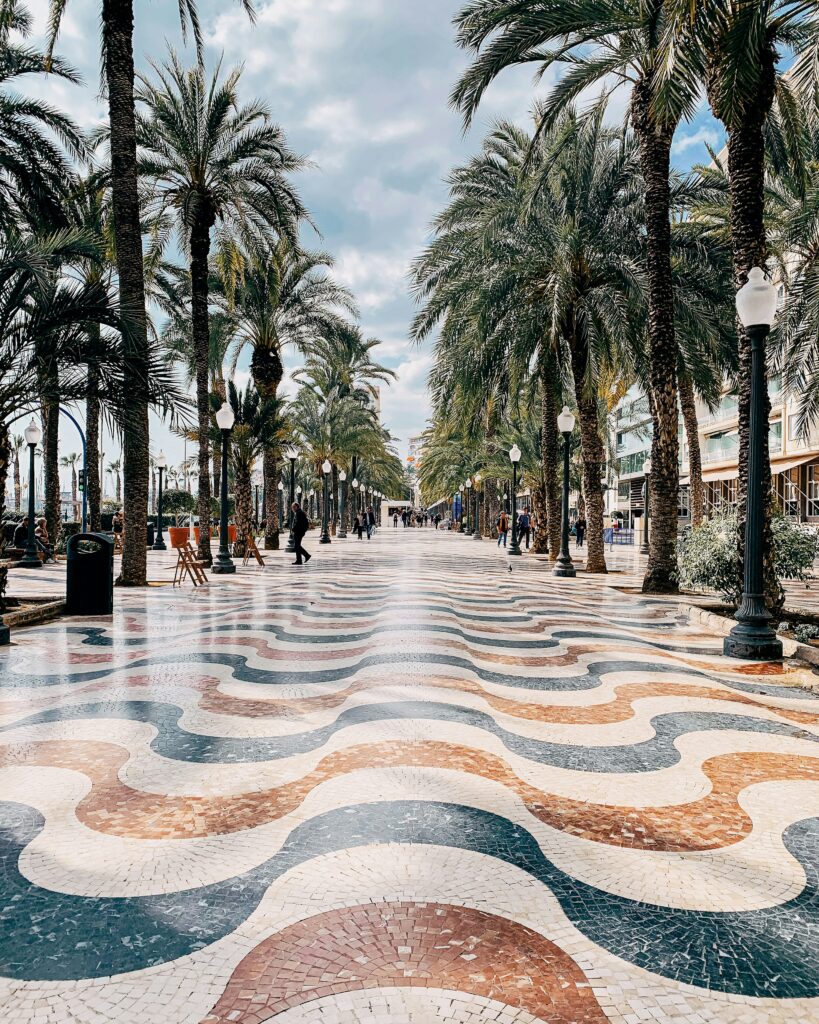
What makes the Explanada truly special is how it comes alive in the evenings when locals come out for their traditional paseo. The wavy marble tiles and palm trees make it uniquely Alicante, and I never get tired of walking here!
El Barrio Santa Cruz
This is Alicante’s old quarter – a maze of narrow, winding streets climbing up the hillside below the castle. Every time I walk through these narrow alleys lined with colourful houses, I discover something new. The famous house with the iconic blue flower pots is absolutely magical and perfect for Instagram photos!
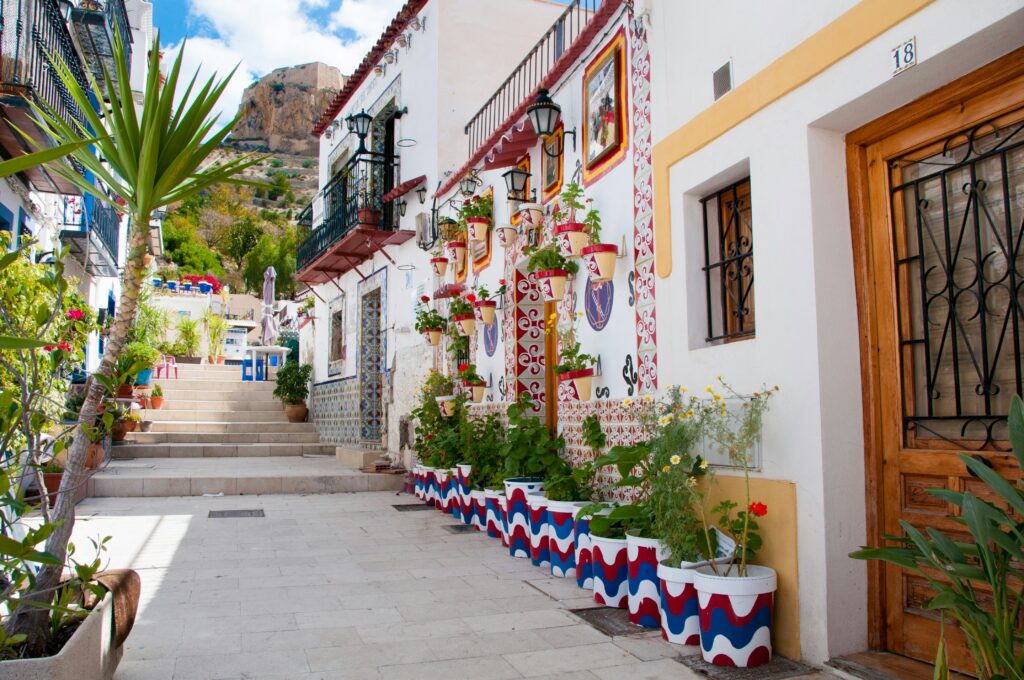
Every time I walk through here, I discover something new. It’s the heart of old Alicante and so well-kept – perfect for photographers or if you want a perfect holiday photo for Instagram.
Take your time wandering through the streets, stopping at small bars for tapas, and soaking up the authentic Spanish atmosphere. It’s the heart of old Alicante and beautifully preserved.
Tours and experiences
For first-time visitors, I highly recommend considering one of the many tours available in Alicante. From walking tours of the old town to food experiences, there’s something for every interest and budget.
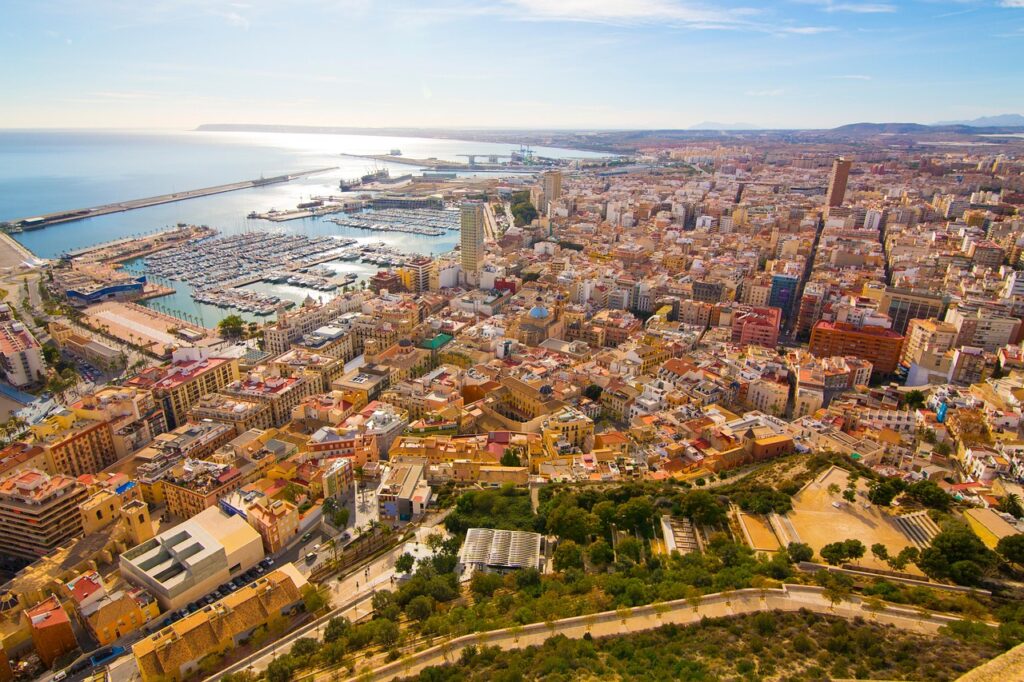
Wine lovers shouldn’t miss the opportunity to visit local wineries – my wine tours and wineries guide has all the details about tasting experiences in the region.
Things to do in Alicante
There’s so much to keep you busy in this incredible city! I’ve written a comprehensive guide covering all the things to do in Alicante, but here are some highlights:
Water activities
Being right on the Mediterranean means fantastic options for water lovers. You can rent a boat or join a sailing club for the day – it’s such a different way to see the city from the water! For detailed information about boat trips and yacht hire, check out my Alicante boat trips guide.
Ready to see Alicante from the water?
The best way to see the Costa Blanca coastline
From luxury yacht hire to affordable group trips, I’ve found the best boat experiences that’ll give you incredible views of the castle, marina, and coastline.
Book Alicante boat trips ⛵The waters here are crystal clear and perfect for diving and snorkelling. I’d recommend starting at Playa de la Albufereta – it’s got some great spots for beginners.
Family fun
If you’re travelling with children, you’ll want to know about the water parks near Alicante and the best zoos in the area. There are some fantastic family-friendly attractions that will keep everyone entertained.
Day trips from Alicante
Alicante makes an excellent base for exploring the wider Costa Blanca region. I’ve put together a guide to the best day trips from Alicante that includes everything from nearby beach towns to inland adventures.
One trip I particularly recommend is to the Canelobre Caves – these spectacular underground caverns are just a short drive away and make for a fascinating half-day excursion.
Visit Tabarca Island
For a day trip from Alicante with a difference, take a boat to Tabarca Island. This small island was once a pirates’ hideout but is now a protected marine reserve. It’s the only inhabited island in the Valencia region.

The boat trip takes about an hour from Alicante port, and once there, you can swim and snorkel in crystal-clear waters, wander the walled village, and enjoy fresh seafood at one of the island’s restaurants.
Alicante’s Beaches
Alicante province is famous for its beaches, and the city itself has several excellent ones:
Playa del Postiguet
This is the main city beach – a golden stretch of sand right below the castle. It’s clean, well-maintained, and has all the facilities you need for a day at the beach. Right at the foot of Santa Bárbara Castle, this beach is my go-to spot for a quick dip or sunbathing session. The location couldn’t be more perfect!
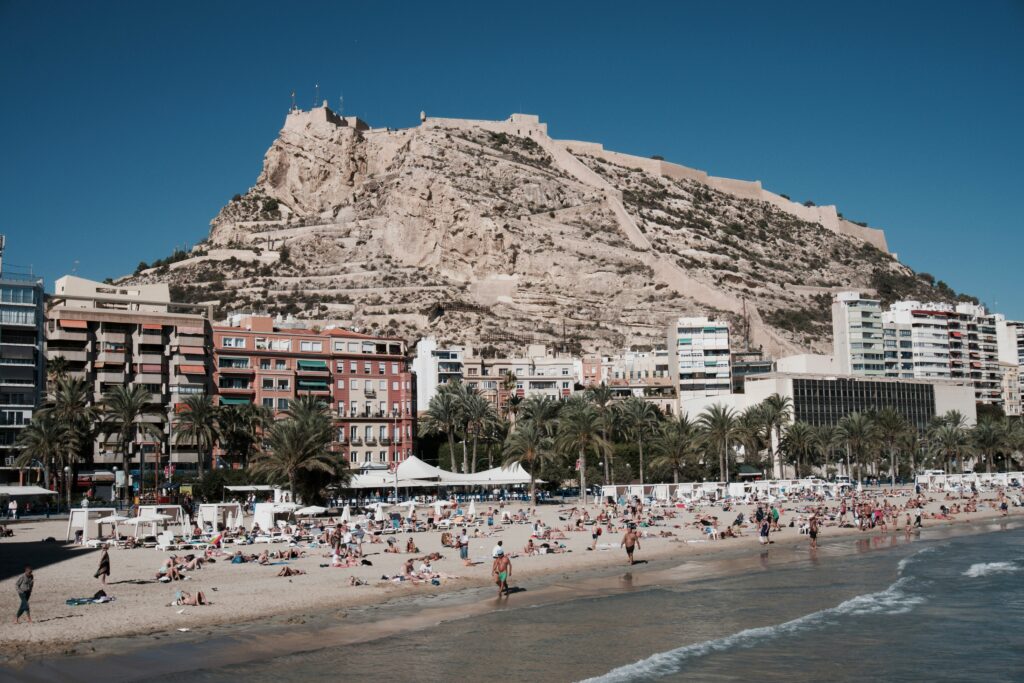
Playa de San Juan
A bit further from the centre (but easily reached by tram), San Juan is a stunning 7-kilometre stretch of fine sand. It’s wider and less crowded than Postiguet, with plenty of water sports available.
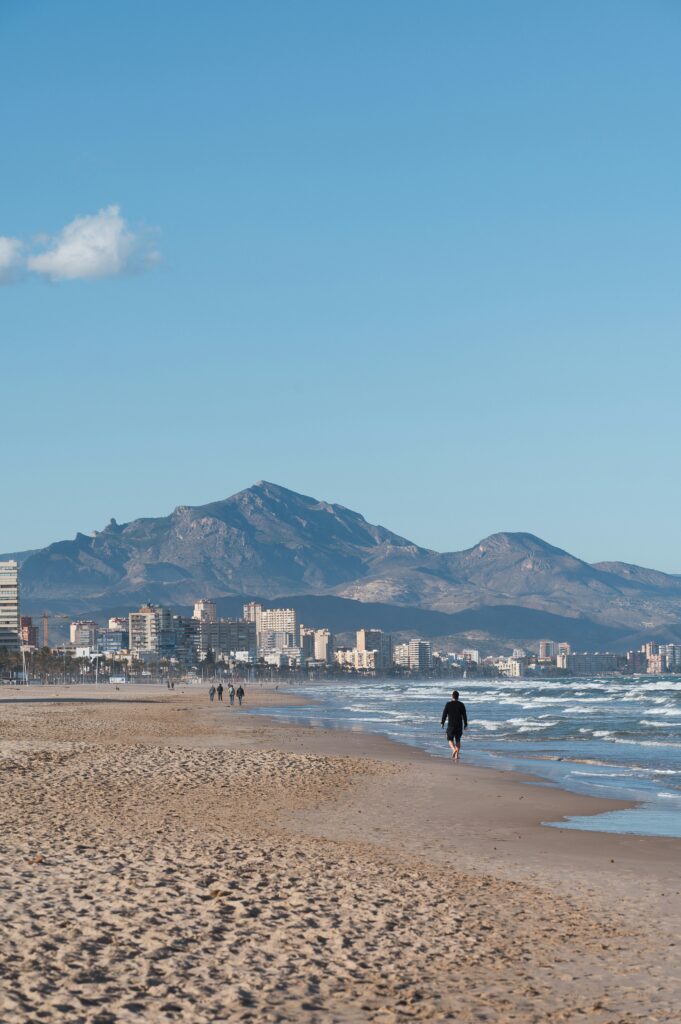
What I love most about San Juan is how spacious it is – you can always find a quiet spot away from the crowds.
The water is crystal clear compared to other nearby beaches, and there are plenty of facilities around. If you’re into beach volleyball, they’ve got free courts which is such a bonus!
Playa de la Albufereta
This is a local secret! It’s a smaller, more chilled-out beach in a residential area away from the crowds you’ll find in the more central Playa del Postiguet.
This small, sheltered beach is located between the city centre and San Juan. It’s popular with locals and has a more relaxed vibe than the main beaches.
Local markets and shopping
The city comes alive during market days, and I always recommend visiting the local markets when they’re at their most active – early in the morning when the produce is freshest and the atmosphere is most authentic. You can find all the details about market days and locations in my Alicante markets guide.

Dining and nightlife
Alicante’s culinary scene is as varied as its history. La Taberna del Gourmet does incredible tapas with a fantastic wine selection – it’s pricier than some spots but worth it for a special evening. Nou Manolín offers fine dining with Mediterranean views, while El Caldero is where I take friends for authentic arroz a banda, a local rice dish that’s absolutely delicious.
The Spanish night starts late here – dinner rarely begins before 9 pm, and clubs don’t get busy until after midnight. You’ll find everything from relaxed beachfront bars to pumping nightclubs.
Getting around Alicante
Public transport here is really efficient. The buses cover pretty much everywhere in the city, and the tram is great for heading to nearby towns like Elche and Benidorm. You can buy tickets right on the bus or at machines at tram stops.
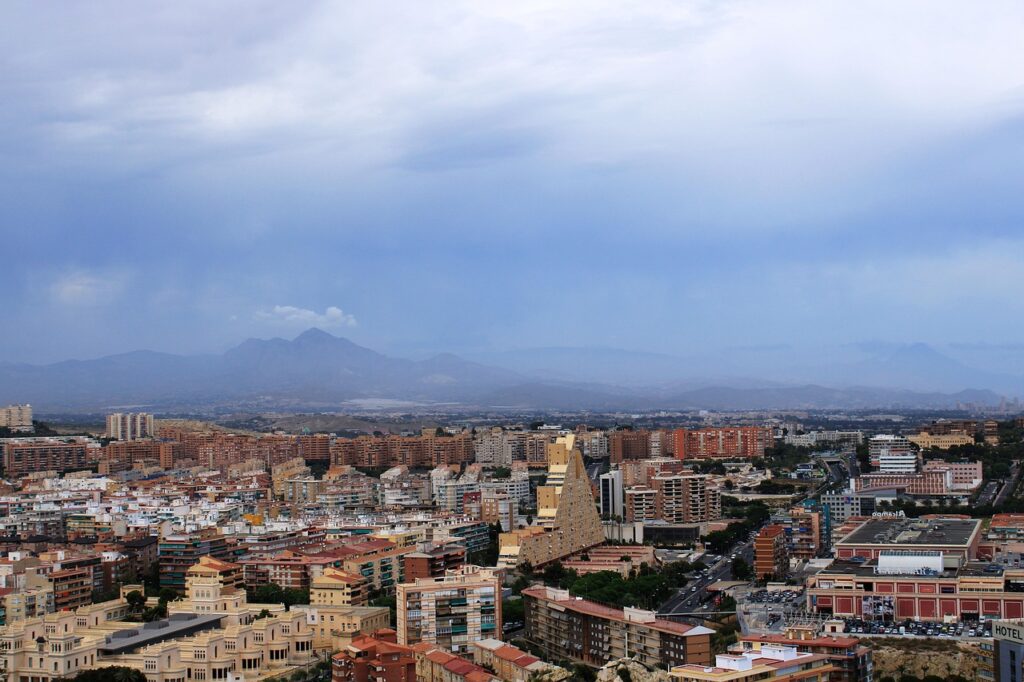
If you’re planning to venture beyond the city limits (which I highly recommend!), renting a car gives you much more freedom to discover the surrounding areas. You’ll find all the major companies at the airport, though I always suggest booking in advance during peak season.
Practical information
Language
While Spanish is the main language, you’ll find English is widely spoken in tourist areas, hotels, and restaurants. That said, I always recommend learning a few basic Spanish phrases – locals really appreciate the effort!
When to visit
From my experience, the absolute best times to visit are May-June or September-October. You get perfect beach weather without the intense summer crowds, and prices tend to be better too. That said, Alicante is beautiful year-round – even in winter, we get plenty of sunny days perfect for exploring the castle or enjoying a paella by the marina!
Currency and tipping
We use Euros (€) here, and you’ll find ATMs everywhere. I recommend having some cash on hand for smaller cafés and shops. If you’re happy with service, leaving a 5-10% tip is standard, though it’s not as expected as in some other countries.
Emergency contacts
- Emergency services: 112
- Local police: +34 965 140 000
- Nearest hospital: Hospital General Universitario de Alicante – +34 965 933 000 (they have English-speaking staff)
My top tips
Book restaurants in advance during summer months – the good ones fill up quickly! The city really comes alive during the Hogueras de San Juan festival in June, but book accommodation well ahead if you’re planning to visit then.
Don’t miss the sunset from Santa Bárbara Castle – it’s one of the best views in the city. And make sure to visit the local market in the morning when it’s full of activity and the produce is at its freshest.
I hope this guide helps you fall in love with Alicante as much as I have!


